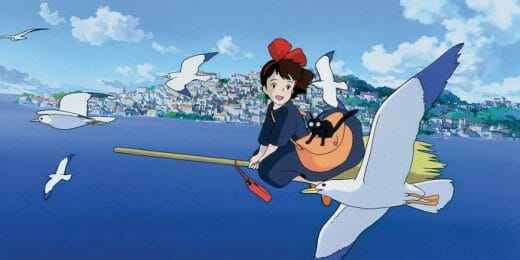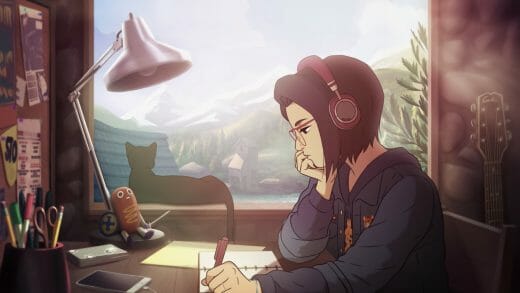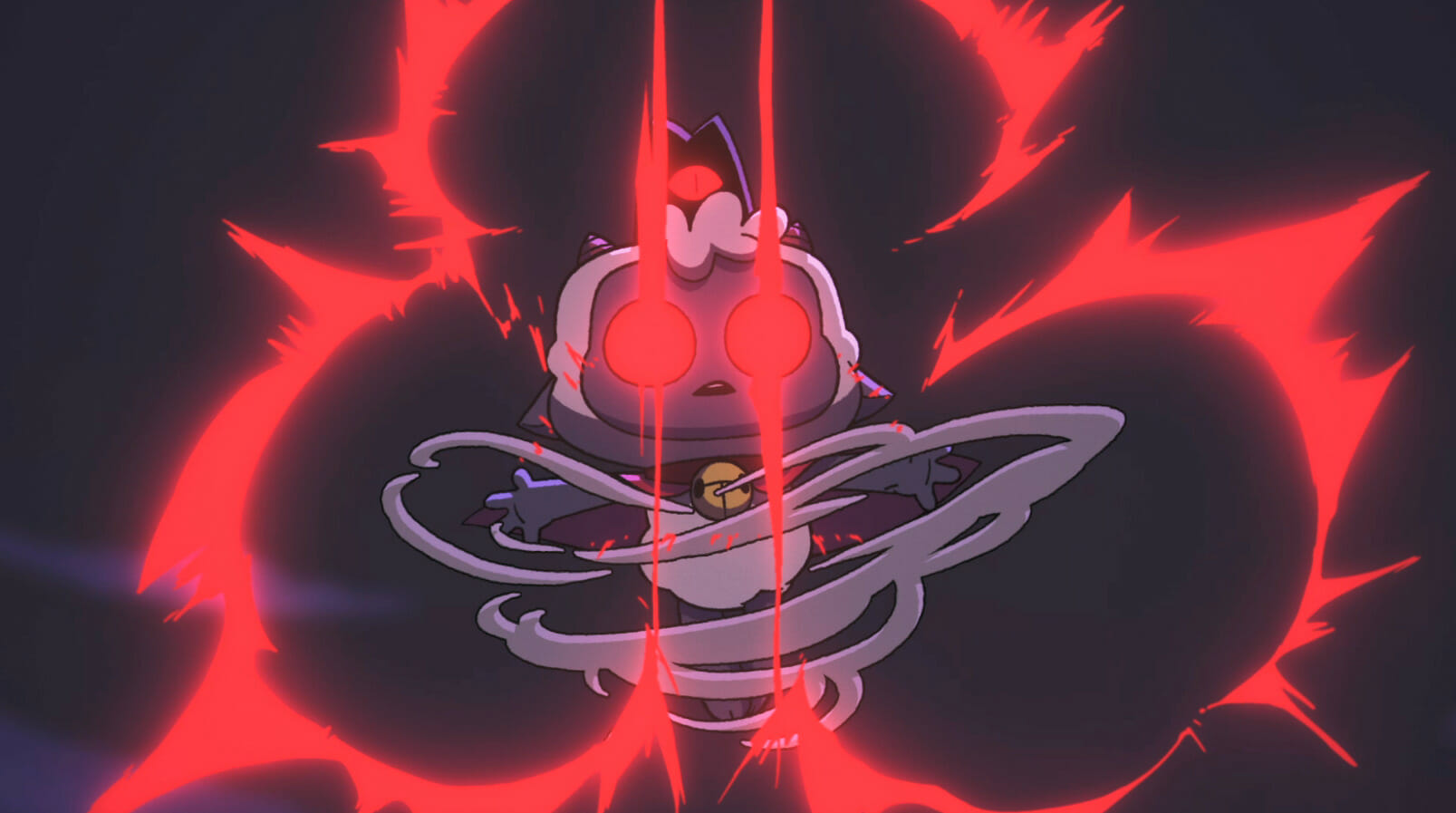
Cult of the Lamb is an indie video game developed by Massive Monster and published by Devolver Digital. This occult-themed, base-building adventure stars a possessed lamb on a mission to build the largest following. Gameplay involves fighting foes in order to rescue potential cult members while also managing logistics for an ever-growing village.
The series of animated trailers dropped during the buildup to Cult of the Lamb’s release were produced by Half Giant, an Australian animation studio that specialises in animating game trailers and cinematics. Cult of the Lamb was Half Giant’s then-largest undertaking, but it’s evident that they were quite capable of rising to the challenge.
We spoke with Bill Northcott (director and head of 2D at Half Giant) about his work on the Cult of the Lamb trailer, how his studio uses Toon Boom Harmony, and the craft that goes into video game cinematics.
How did animating Cult of the Lamb’s trailers impact work at Half Giant?
Bill: We started Half Giant a couple of years ago. David Smith (my co-director) and I both have backgrounds in film and TV animation. My experience is in children’s television, where I used a lot of Harmony.
We started off making game trailers for friends, as we have friends in the game industry. We did a couple of 3D trailers, and then based on the strength of those, word-of-mouth spread a bit. And eventually got to Julian Wilton, the director of Cult of the Lamb. So that’s how we initially got hooked up with them.
Getting that job is pretty much the reason that we’re in business today. We did an announcement trailer for their game, which premiered at Gamescom 2021, which was a pretty big deal for us. That’s a lot of exposure, getting your trailer in the opening night presentation for Gamescom.
Then on the strength of that, Devolver Digital, ordered three more trailers from us. It was the biggest animation order we’d received since we started doing this.
Who collaborated on this project, and what were their roles?
Bill: David and I co-direct all of our projects. He’s the head of 3D here, and I’m the head of 2D. So on our Toon Boom Harmony projects, I’m a little more on tools. But all the filmmaking decisions, we make together.
We were given a lot of creative freedom on the Lamb project. The publisher, Devolver Digital, put a lot of trust in us. We actually wrote all the scripts and storyboarded everything. Everything from concept to what you see is us, which is pretty exciting.
We have one or two background artists. We have a character layout role, which isn’t always someone who’s an animator themselves, but more of a strong illustrator. And we had four or five animators across all of the Lamb trailers, including myself. Effects animation was another role. Also a couple of clean-up artists, a sound designer, and compositor.
How would you describe your role in this film and what did a typical day look like in production?
Bill: My role is as animation director. Because we were just getting started when we were making these trailers, we were still finding our pipeline. So if anything came out broken or not what we needed, a lot of that was falling to David and myself. We were putting out a lot of fire in the early days.
This is over a year since we did the first trailer. I would like to think that over the four different videos we made, the pipeline got a lot more streamlined. Our roles then were pretty much everything, which was a lot. We’ve tried to alter our pipelines since to bring in people to be more responsible for different departments.
My focus is in the animation department. That’s what my background is. Most of the notes I would give on a project are related to animation.
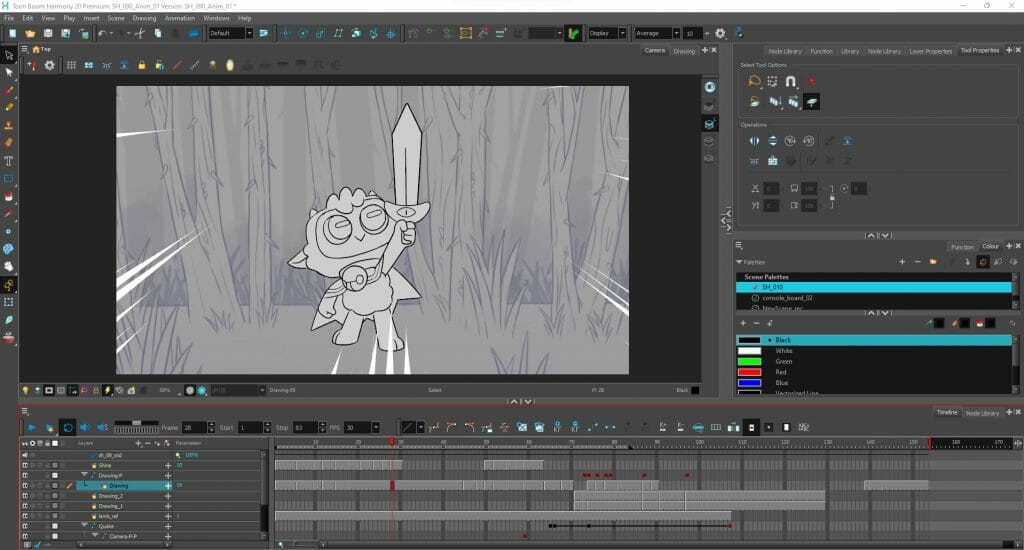
What did the creative brief for this project look like?
Bill: Game trailers are interesting. Half Giant focuses solely on game trailers. We don’t do any other kind of animation. I really like them, as a creative brief. I’ve done commercial work before and I actually quite like working to a commercial brief, which is what we’re given here. Our job is to try and increase sales. But it’s the most creative version of that that’s possible.
We’re basically making short films for a commercial outcome. There’s a measure of success, of how well you fulfil the brief, which I like. When you finish the project you know whether you’ve done a good job or not. As opposed to doing a personal project, which is also satisfying, but it’s hard to know when it’s finished.
Something that’s interesting about doing these kinds of trailers is that games approach us late in their development cycle. So there’s a lot of art already established for the game. Depending on the genre, sometimes we stick very closely to their art style and even use their assets, if they have character turnarounds or even 3D assets. Other times we might be adapting a pixel art game. The character is tiny on screen, so what they would look like in a more cinematic world is open for interpretation.
In the case of Lamb, we got to use a lot of what was established. The lamb in the game is small enough on-screen that he doesn’t actually have hands; he has little stumps. We made some adjustments to the model, like that, just so he was higher fidelity to see up-close. I think our lamb is a little taller than the in-game lamb, and has those extra details.
What did the planning stage of this project look like?
Bill: We started on paper, just with the script, and a lot of meetings between the game developer and the publisher to work out what these scripts were going to be.
The brief for each of them were slightly different. The first trailer we did was to announce the game at Gamescom 2021. That one just had to be a bit of sizzle, so we just picked key visuals from the game and sort of strung them together. That first video is a bit more of a montage style.
The next trailer was to announce what consoles the title was coming to. We came up with a concept for that, where the characters in the game were unearthing this treasure, and the treasure was the consoles that the game was coming to. We found an in-universe explanation for it.
The next one was to announce what the release date was. Cult of the Lamb is about building a cult. You have to recruit worshippers to join you in a village. There’s a combat element where you go out to dungeons and you fight monsters and you try to bring people home. Then there’s a world-building, village management sim happening as well. In that second trailer we tried to focus on the village stuff, and flesh out a few characters and get a few gags in there. We made the release date a prophecy in the world of the game, like a doomsday cult barking about, “The end is coming on this date.” That was the concept for that trailer.
The final trailer showcased the combat elements of the game. That’s probably my favourite out of the set of them, because we just got to animate really cool combat stuff. That one came out on the release day, at the same time as the game.
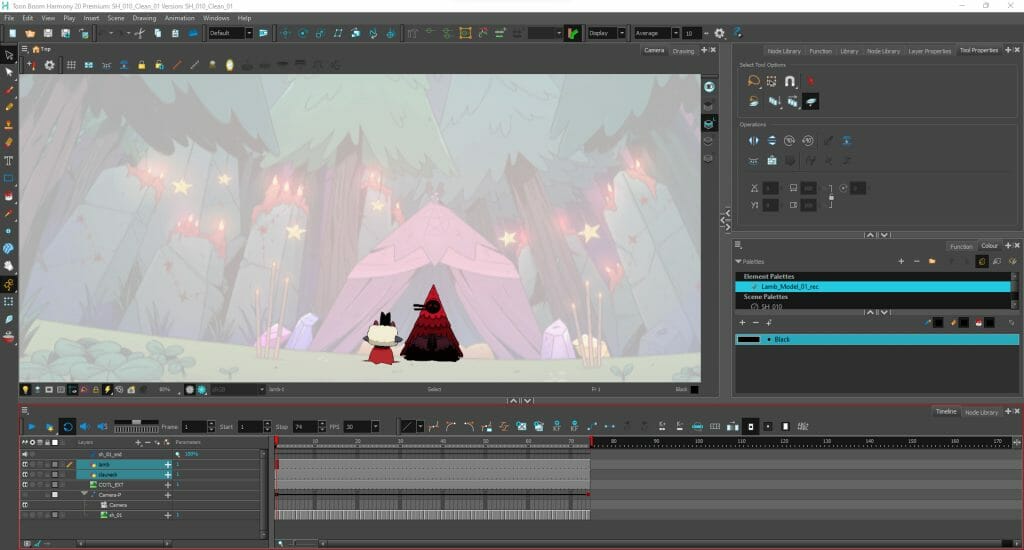
What sources of inspiration did you draw from when interpreting the characters for animation?
Bill: The game is the main source of inspiration. In the case of Lamb, we didn’t have to think too hard about what we were going to do with the characters because the artwork we had was pretty prescriptive. What was up to us was what kind of style we would shoot it in. Were we going to make a funny, little-buddy film, or we were going to make a high-action, high-stakes, save-the-world kind of story?
In the end, we found a line with it. We had action beats but we had some goofy stuff as well, which I think suited the game. And because we got to make four of these, we have different trailers that focus on its different aspects.
How did you go about adapting the video game into an animated trailer?
Bill: Different clients will have different materials. Because you see the Lamb walking around on-screen, as animators we would look at that and assume that the game development pipeline is similar to our animation pipeline. So there must be character turnarounds and model sheets for this character, because you animated it and it’s on screen. And then when we ask for those things, no, they didn’t have any of them.
It depends on the client, but we’ve found that with most people we’ve worked with, they don’t have the preproduction we would expect them to. Especially with indies. A lot of indie game makers will just start working. They follow their bliss and they don’t do preproduction. They just make something cool, and make a cool walk cycle, and then they make it from another angle later, and just sort of make it up as they go. It can be a little less rigid than what we do in animation.
We go back to fill in the gaps. With a game, what you see is what you get. We use everything we possibly can from the game, as well as contributing our own creative ideas to get us to where we need to go.
my bits of rough animation for @halfgiant_ ‘s Cult of the Lamb launch trailer! loved getting to draw these cute critters doing gnarly things pic.twitter.com/GXgZ5p0BbU
— Gregzilla (@GregzillaGT) August 12, 2022
What scenes were the most interesting or challenging for your team to animate?
Bill: Definitely the final trailer, which is the most action-oriented one. We found a really good storyboard artist for that. His name is Charles Lefebvre. We were really lucky he wanted to work with us. He did an excellent job. His boards really pushed what we’re capable of, which is exactly what we wanted. We wanted someone to board something really difficult so that we could rise to it and I think that we did.
How would you describe the style and animation techniques used to make this film?
Bill: The barriers for doing hand-drawn artwork in Toon Boom Harmony is low. It’s a great place to do traditional animation, but you also get the tricks and tools of a digital workflow. There’s pegged aspects and rigged aspects of our work. I’m not saying you should be ashamed of that stuff but we like to hide that. We use the tools available to make our lives easier and keep it looking as close to traditional animation as possible.
How would you describe the reaction to the trailers?
Bill: Really good! The first one came out at Gamescom 2021, and we actually attended Gamescom 2022 last month [in August]. Because there was such a long lead-up from announcement to game release, that game was still quite fresh in everybody’s minds. We found when making meetings with new clients and pitching our services, most people were familiar with the game and familiar with our work already. Which was great.
What other projects has Half Giant worked on since Cult of the Lamb?
Bill: Since doing Cult of the Lamb, we also did a trailer and a cinematic for a game called Rogue Legacy 2. That was another big indie game that a lot of people are familiar with. We very much used the same techniques and a lot of the same crew from Lamb.
We’ve also done a trailer for a game called Lost in Play, which came out more recently, in a similar style. We’ve worked on some projects we can’t put out now, which is more of an anime, realistically-proportioned project that I’m really excited to show everyone because it’s quite different from what’s in our portfolio so far.
What advice would you have for students looking to enter the animation industry?
Bill: I don’t know if this is advice I would have wanted to get when I was a student, but I would say just get in any way you can. Take any role. It doesn’t matter what it is. Just get your foot in somewhere.
The biggest thing that’s going to make you good is just getting in the hours and being around people who are good. How you take that first step, I don’t know.
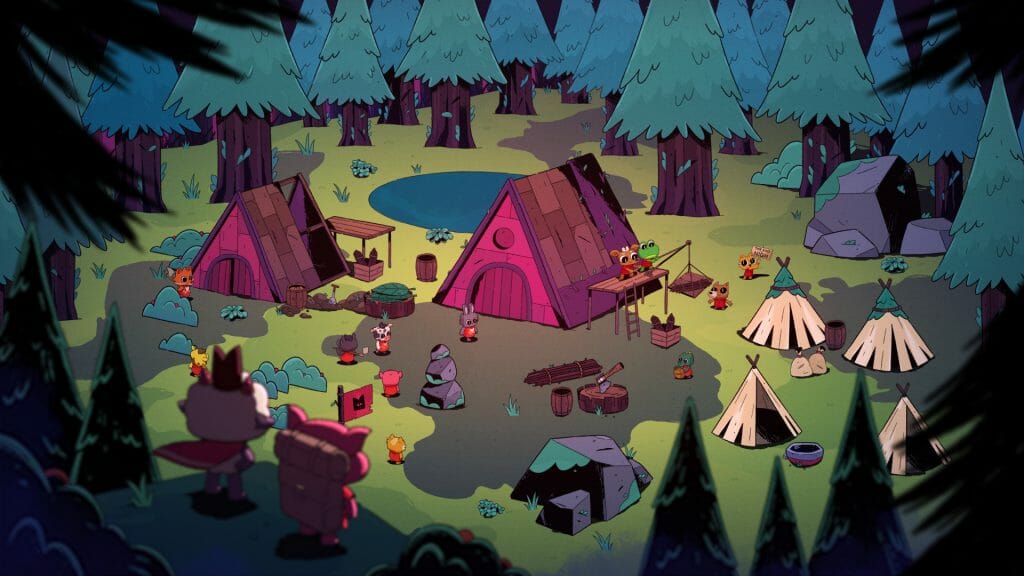
- Interested in seeing big things from Half Giant? See more of their work on Instagram, Twitter, and Vimeo, and visit the studio’s website.
- Ready to use Harmony Premium in your next project? Get started by downloading the 21-day trial.


